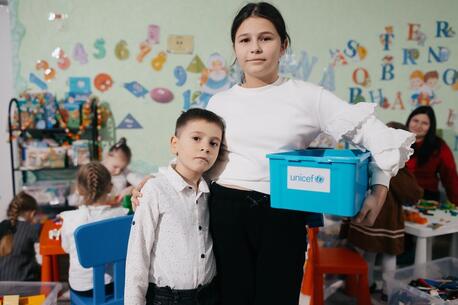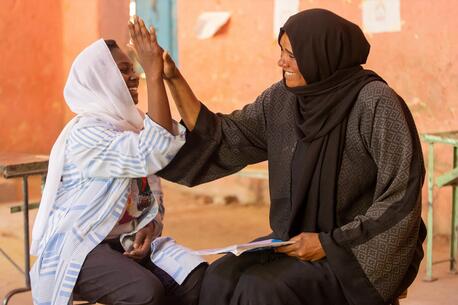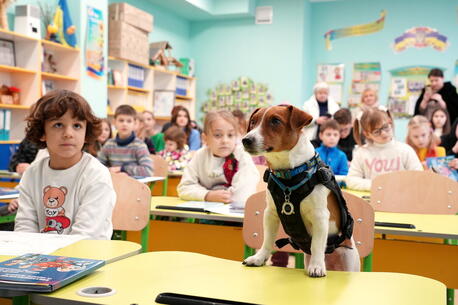
Parenting: Mental Health Conditions Explained
Signs a kid may be suffering — and what they might be suffering from.
While one mental health issue may surface alone, some conditions commonly occur together. For example, about 3 in 4 children with depression also had anxiety. Similarly, stress and anxiety are also associated.
Here are some brief descriptions of some mental health conditions to help parents and caregivers.
Learn more about how to support your child's mental health.
What is stress?
Stress is the physical or mental response to an external cause, such as going back to school or arguing with a friend. It can be a positive, one-time short-term occurrence helping meet the challenge of an intense situation, or it can be negative, happening repeatedly over a long time, causing excessive and chronic stress which can affect health.
Signs & symptoms
Everyone feels stress at times, but kids and teens may not recognize what they are going through. They may be irritable, have headaches or stomach aches, lack energy, have trouble sleeping. eat too much or too little.
What parents and caregivers can do
It's important to help your child identify what causes their stress — their triggers — so they can learn to avoid or manage them. Encourage them to exercise, eat a healthy diet and get enough (but not too much) sleep for starters. Also try relaxation exercises.
Learn more about teaching your child healthy habits.
If your child is still struggling to cope, seek help. [LINK TO "how to Support" page]
What is anxiety?
Anxiety is your body's reaction to stress, the feeling you get when you’re worried or scared about something. It is a natural, human feeling of fear or panic. It usually passes and we calm down and feel better.
Small amounts of worry and fear can help keep us safe and even protect us from danger. But sometimes anxiety can get out of control. Constant worry can lead to prolonged anxiety, making life feel like a spiral of worry, fear and dread.
Anxiety can also prevent your child from doing things they enjoy or feel worried or panicky in a situation that is not stressful.
Signs & symptoms
Some of the common signs and symptoms include restlessness, agitation, fatigue, irritability, difficulty concentrating or sleeping. Types of anxiety include separation anxiety, phobias, social anxiety and intense fear leading to panic attacks.
What parents and caregivers can do
Coping strategies include stress management techniques, such as exercise, mindfulness, journaling and meditation, as well as treatments including talk therapy, and medication.
The National Institute of Mental Health (NIMH) offers a helpful fact sheet on stress and anxiety for teens and young adults.
What is depression?
Occasional sadness is a normal part of life. But when your child's emotion is intense and lasts longer than two weeks, it's cause for concern.
Major depression is an all-too-common mood disorder that can be brought on by events, or it may be inherited. It can interfere with basic functions of life like how people feel, think, and handle daily activities, such as sleeping, eating or working.
And it favors girls and LGBQ+ students. In 2021, girls were nearly twice as likely to have persistent feelings of sadness or hopelessness and nearly twice as likely to attempt suicide compared to boys.
Signs & symptoms
Fear, worry, deep sadness, irritability and distress that lasts longer than two weeks are signs your child could be depressed. Other signs are if a child is feeling helpless and hopeless, or bad about themselves, or have lost interest in things they used to enjoy. Other signs are a change in sleeping and eating patterns.
What parents and caregivers can do
Depression is treatable, usually with talk therapy, medication or both. Seeking professional help as soon as you notice symptoms is essential.
What are panic attacks?
A panic attack involves feelings of overwhelming fear and anxiety that can hit quite suddenly. It is usually accompanied by intense physical symptoms such as a racing heart.
Many children feel a sense of terror during an attack, like something bad is about to happen. These feelings can occur even when there is no real danger.
Panic attacks can feel very frightening, especially to a young person, but they can usually be stopped with treatment. And it’s important to know that a panic attack won’t cause any harm and — even though it may not seem so — the feeling will pass.
Signs & symptoms
Sudden fear, anxiety, trouble breathing, a racing heart, sweating and lightheadedness could indicate a child is experiencing a panic attack.
What parents and caregivers can do
There are techniques to help your child cope, but knowing what triggers an attack is a great first step. Diverting a child's attention with a pleasant distraction, doing breathing exercises and practicing mindfulness also help.
With treatment, panic attacks can usually be stopped. Early treatment can help prevent more serious symptoms.
If you notice your child experiencing serious repeated episodes, it's time to seek help from your healthcare provider. Your family doctor or pediatrician can evaluate and refer treatment.
What is self-harm?
Any behavior that causes harm to oneself as a way to deal with difficult emotions can be seen as self-harm. It most frequently takes the form of cutting, burning, non-suicidal self-injury or other high-risk behaviors.
Some people use their bodies to express the thoughts and feelings they can’t say out loud — and end up harming themselves. If your child is self-harming, they are not doing it for attention, but as a means of coping with problems. They need your support and guidance to feel safe and reassured that they can learn positive ways of coping.
Signs & symptoms
It is important to know that self-harm does not always lead to visible self injury; it is not always obvious, and children often hide it. Forms of self-harm include addictive behaviors, such as using drugs or alcohol; not eating, over-eating or forcing themself to vomit; and getting into fights or risky situations on purpose.
What parents and caregivers can do
If a child is showing signs of self-harm, there are some things parents can do to help them find more positive ways to cope with strong or overwhelming feelings.
First, seek professional help immediately. Your health-care provider can refer you to a mental health professional so your child can get the right treatment such as counseling or talk therapy, where they can talk with a trained mental health professional about what they are feeling and ways to cope.
Talking about it with your child and finding the right support and help is key.
Suicide prevention hotline
If your child does express suicidal thoughts, get help right away by calling the confidential toll-free National Suicide Prevention Lifeline at 1-800-273-TALK (8255), available 24 hours a day, 7 days a week. Lifeline chat is at suicidepreventionlifeline.org.





